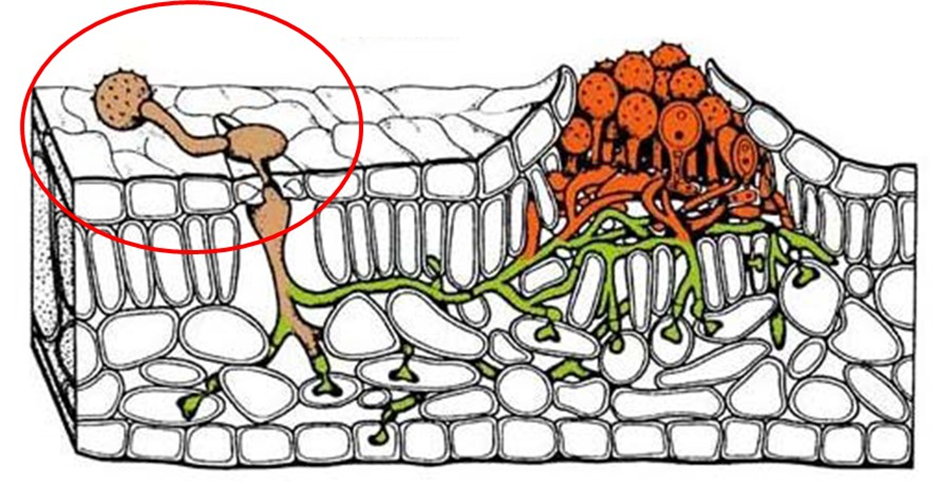Commercially, carboxamides began to be used in soybeans from 2014, and represent the newest chemical group of current fungicides. The first actives developed were fluxapyroxad, present in the fungicides Orkestra and Ativum, and benzovindiflupir, a component of Elatus and Vessarya. Later, there was the development of bixafem, present in the fungicide Fox Xpro, and of impirfluxam, part of Excalia Max. Currently, several other commercial fungicides share such carboxamides, such as Aumenax and Blavity, fluxapyroxad, Alade and Mitrion, benzovindiflupyr. Other fungicides and carboxamides will soon be available as options for use on soybeans.
But how do carboxyamides work?
Technically speaking, carboxamides inhibit a respiratory enzyme (succinate dehydrogenase) in fungi, preventing them from fully utilizing oxygen and producing energy. In the event of a fungic disease in plants, the process that most requires energy is the act of penetration into the plant, where the fungus has to cross the physical protection barriers represented by the leaf tissues (Figure 1). In the presence of carboxamides in the plant, it is at this moment that their main action occurs and the fungus collapses. Therefore, the mode of action of carboxamides is preventive, preventing the fungus from entering the plant and the infection process. If the application is carried out after the infection is already established, the action of carboxamides will occur in the next cycle of the fungus, when its new spores germinate and try to establish new infections, which corresponds to a time lapse of 8 to 9 days in a disease. like soybean rust. See the importance of preventive use of carboxamides and their inclusion in the first half of a disease management program in soybeans.
Important warnings for the use of carboxyamides
Another characteristic of carboxamides is their lower solubility in water. This influences various aspects of its use and functioning. One of them is the importance of using suitable adjuvants to improve their entry into the plant. Another point is to guarantee at least two hours between its application and the occurrence of rain. Once inside the leaf, carboxamides are classified as mesostemic, that is, they have low movement, remaining longer in the absorption site. This gives greater residual, longer-lasting protection.
Disease control
In relation to controlled fungi/diseases, carboxamides have different profiles. Some are more potent and specific to rust (eg benzovindyflupyr and impirfluxam), others have a greater spectrum of control over leaf spot and powdery mildew (eg fluxapyroxad and bixafem), and partially over white mold (eg bixafem). Knowledge of its characteristics is essential to correctly position each fungicide in the management program, according to the occurrence of diseases, and also to define the composition with other actives, either in the fungicide formulation or in the tank mix. In soybean, based on the normal sequence of disease onset, carboxamides with greater action on stains and powdery mildew precede those with a more rust profile. Carboxamides should not be used in final applications, as they are more preventive and are not effective against the Cercospora complex that causes end-of-cycle diseases. In wheat and corn, carboxamides are also very useful in controlling leaf spot and rust.
Correct management is essential
As with other chemical predecessors, such as triazoles and strobilurins, fungic resistance is also partially present in carboxamides. This has already been reported in Phakopsora, the agent of Asian rust, and Corynespora of the target spot. For this reason, the joint use of multisites (mancozeb, chlorothalonil and cuprics), either in the formulation or in the tank mix, is extremely important. Multi-site reinforcements help to reduce the impacts of resistance, maintain effective and stable disease control and ensure better yields.
Conclusion
In summary, the use of carboxamide-based fungicides is recommended as a preventive measure in the first applications of the soybean management program, in association with multisites for the control of leaf spot, powdery mildew and Asian rust. The adhesion of carboxamide-based fungicides must be combined with good adjuvants and good application technology, respecting the dose of each product and disease.”

Figura 1: Local de ação das carboxamidas no processo de infecção.




